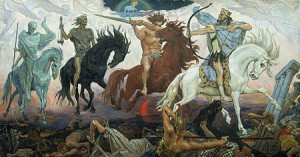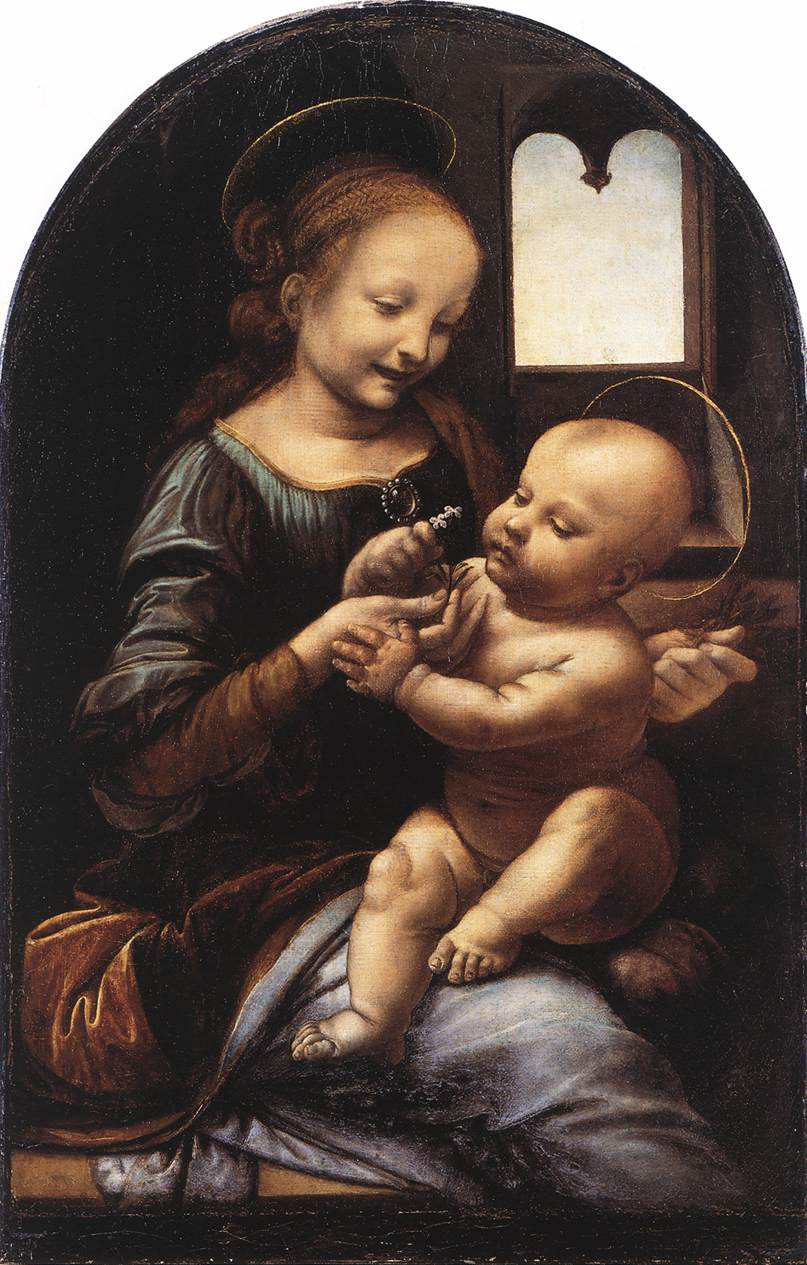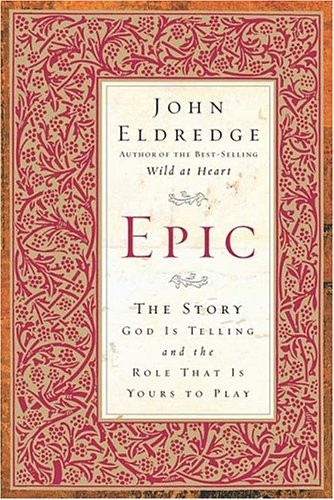As little children

A few weeks ago, we finished Egermeier’s Bible Storybook. It ends with a description of John on Patmos, writing Revelation. It doesn’t summarize Revelation — just tells the story of its writing.
My older daughter remembered once hearing the Bible description of the four horsemen of the Apocalypse in Revelation 6, and she asked, “Could we read that?”
“Sure,” I said. “Why don’t you read it out of your Adventure Bible.” So she did… verse after verse of highly symbolic description of the otherworldly setting of Heaven. Her younger sister listened in rapt attention. I sweated, praying that she wouldn’t ask me to explain it.
She didn’t “understand” what it meant. (The first question she asked was, “Which horse is your favorite?”) And though she did ask what it was about, and I answered only in the most general terms, she loved reading it. We talked about other dream visions in the Bible, and how they’re hard to understand on one level, but make a kind of sense on another.
It was a picture to me of the treasures of God’s Word. If we can just get ourselves to read it, we are enriched — even by its most difficult passages. As John says at the start of Revelation,
Blessed is the one who reads the words of this prophecy, and blessed are those who hear it and take to heart what is written in it, because the time is near.
The thing is, the symbolism of that chapter has been explained to me before, probably more than once. I just never remember it. This leads me to think that maybe that’s not what I really even want or need from such passages, and maybe it’s not why God puts them in His Word. If they could be plotted out on a symbol graph — “X equals Y, this stands for that” — then why would He bother to say it symbolically?
Maybe passages like this are there partly for the experience of bewilderment and wonder and awe they inspire. We get a glimpse of another dimension of reality, the place where God is on His throne, majestic and powerful and holy — where He is deeply concerned about what is going on on earth, and where He has a plan to unfold. This is the overwhelming impression of Revelation 6. The details of what each ingredient of the scene represents have a kind of coherence, and they reward further study. But the real wonder of the scene is its mysteriousness; that’s what always sticks in my mind.
There is a wisdom in leaving that mystery intact, and my children’s comfort level with it was encouraging to me. As Marilynne Robinson says of her experience as a child hearing the Bible stories,
No intrusion on the strangeness of these tales was ever made. It was as if some old relative had walked me down to the lake knowing an imperious whim of heaven had made it a sea of gold and glass, and had said, This is a fine evening, and walked me home again.




2 Comments
Polly
I love this post, thank you for sharing it. I think there is real wisdom in not explaining everything to children and simply answering(the best we can) what they actually ask. That Robinson quote reminds me of Susan Scaheffer Macauley’s experience in the art museum, do you remember that from “For the Children’s Sake”?
Janet
I read your comment and looked up the passage in ‘For the Children’s Sake.’ It’s perfect!